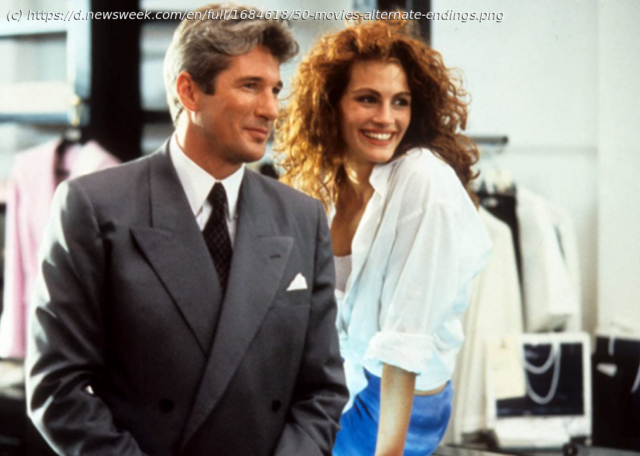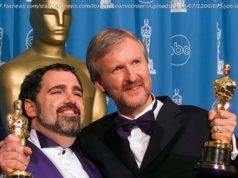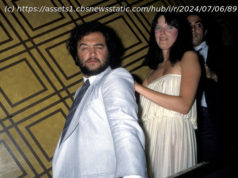Between the first word put in the script and the completed theatrical release, a film goes through countless rewrites and sometimes complete reshoots. Starting with the year 1939 all the way up until
Between the first word put on the page of a script and the completed theatrical release, a film goes through countless changes, shifts, rewrites, and sometimes complete reshoots. Even after a film is released—such as in the case of a movie like Ridley Scott’s Blade Runner—the director can continue working on additional alterations to be released in future home media releases, or even as entirely separate films from the theatrical cut. Director Jordan Peele publicly said it took a whopping 200 drafts of his widely acclaimed and award-winning film Get Out before he had a version that was ready for production. And even then, the original ending had to be reshot once it got in front of test audiences. Movies are a collaborative process. When all the moving pieces are combined, and cast and crew assembled, different perspectives and inputs can drastically alter a film’s original course. This is in addition to the eventual input acquired from test screenings, which can further complicate a film’s road to completion. So, sometimes alternate endings come about because test audiences don’t agree with the director’s vision, and consumption has to be taken into account over artistic intent. Sometimes, a studio gets its hands over the production first, foreseeing potential problems with test audiences before they even happen. And sometimes, it’s simply that there was too much additional footage shot that couldn’t make the final cut of the film, or the director changed his mind one way or the other. But whatever the case may be, a revised ending can drastically reshape a movie from start to finish—oftentimes for the better, but equally as often for the worse. However, most of the time, these alternate endings become eventually accessible to the public, either released with home media or even leaked online, allowing people to see the movies that could’ve been. Thus, after scouring the internet and acquiring information from various sources, Stacker compiled its own list of movies with alternate endings, ranging widely in genre, medium, and reason for changed ending. Starting with the year 1939, all the way up until 2018, here are 50 movies with alternate endings. You may also like: 100 Greatest Movie Quotes from 100 Years of Film The classic Civil War film starring Vivien Leigh and Clark Gable almost veered a bit differently from Rhett Butler’s iconic ending line „Frankly, my dear, I don’t give a damn,“ after Scarlett O’Hara pleads with him to stay with her in Atlanta. In 2014, an alternate script of the film was unearthed, in which Scarlett, instead, comes off confident that Rhett will return to her someday. The producers‘ ultimate decision to scrap it retains Scarlett’s decision to return home to Tara, putting off thinking about hard things until tomorrow. One of Alfred Hitchcock’s Cary Grant-led thrillers was notoriously fraught in the decision over its ending, abetted by studio meddling. While the novel the movie is adapted from tells the story of a killer through his victim’s eyes, Grant’s casting as the leading man made studio RKO want Hitchcock to position Grant as a hero to retain his public image. Thus, the film ends with Grant’s Johnnie admitting his actually non-murderous intentions to his wife, Lina (Joan Fontaine), and the two staying together—much to the years-long displeasure of Hitchcock. In another famous Hitchcock picture, the classic horror film about inexplicably murderous avians almost had a much more chaotic final scene. In the original film, Tippi Hedren’s Melanie Daniels has been deeply traumatized and injured by the bird attacks and must be taken to a hospital in San Francisco. As she’s escorted into a car to take her away, a menacing mass of birds ominously watch her and continue to do so as the car drives away. An alternative ending idea was to show the ravaged town and shoot one final bird attack before Melanie gets away, though the projected hefty shooting time by screenwriter Evan Hunter might’ve been what killed that ending. Stanley Kubrick’s satirical skewering of Cold War hysteria almost ended in a pie fight, as opposed to a nuclear holocaust cheerfully set to the song „We’ll Meet Again,“ sung by Vera Lynn. Already shot and ready to go, if not for a last-minute change by Kubrick, the film was to end with an absurd, mass custard pie fight between world leaders in the infamous War Room. However, after a test screening, Kubrick deemed the ending „too farcical,“ and with a line of dialogue that could potentially offend due to the recent assassination of President John F. Kennedy. The seminal Western, starring cinema icons Robert Redford and Paul Newman, ends on a famously ambiguous note, with Redford’s Sundance Kid and Newman’s Butch Cassidy emerging, guns blazing, to a shootout with Bolivian soldiers in South America. The movie—based on real events—doesn’t actually depict the ensuing shootout. Instead, it finishes on a sepia-toned freeze frame, allowing the audience to believe that, perhaps, the pair made it out alive. However, the original ending let their gruesome deaths play out but was cut in favor of one that bolstered their glamorous myth. You may also like: 50 best space movies of all time George Romero’s equally revered sequel to his groundbreaking zombie horror film Night of the Living Dead sees two of its protagonists, Peter and Francine, who were previously held up in an abandoned mall during the zombie apocalypse, escape via helicopter from the roof after the undead and looters began overtaking the mall. However, in Romero’s much bleaker plan for the end of his film, Peter and Francine both commit suicide. Though Romero did partially shoot this original ending, he went with a more vaguely optimistic one, having grown attached to the characters and taking into account the film’s lighter tone. The end Ridley Scott’s Alien, which would go on to become a quintessential sci-fi franchise, sees heroine Ripley narrowly escape the clutches of the malevolent Xenomorph, having fled her ravaged ship and crew in a shuttle that unknowingly carried the Xenomorph on board. But in the film’s alternate ending, Ripley shockingly perishes, having never been intended to survive by Scott in the first place. When he was met with anger by studio executives, Scott was forced to shift the script to a happier ending. In the canon ending to the classic horror film, Jack Torrance’s reign of terror on Wendy and Danny at the Overlook Hotel ends with their escape. Jack eventually freezes to death after getting lost in the hotel hedge maze, and the film ends with a cryptic photo showing Jack at the hotel decades before. However, Kubrick’s adaptation of the Stephen King novel extended this final scene, with Wendy and Danny being visited at a hospital by the hotel manager, Stuart Ullman, who insists there isn’t enough evidence to support Wendy’s claims of what happened there. Ullman then commits a small act that seems to portray his knowledge of the hotel’s supernatural forces, but the scene was, unfortunately, not well received by test audiences. Due to test screenings and studio meddling, Blade Runner has become notorious for its multiple alternate endings. There were seven alternate endings, and Ridley Scott continued to work on the most definitive version of the film after its poor reception in 1982. The „U.S. Theatrical Cut“ is what screened in 1982 and included narration and a happy ending. The „Workprint“ version is what Scott had before changes were made due to test screenings. The „International Cut“ is more violent. The „Director’s Cut“ gets rid of narration and the happy ending and includes a dream sequence. The „Final Cut“ has all the changes of the „Director’s Cut“ plus the violence of the „International Cut,“ an extended dream sequence, and additional footage added, and is what Scott considers to be the definitive version of Blade Runner. Steven Spielberg’s sci-fi family classic ends with lovable alien E.T. giving heartfelt goodbyes to his human friends before boarding his spaceship home. However, it was revealed by actor Robert MacNaughton, who plays lead character Elliott’s older brother Michael, that after E. T’s emotional farewell, Elliott would be seen playing „Dungeons & Dragons“ again with his friends, this time as the Dungeon Master, before the camera reveals that Elliott is still in touch with E.T., But after the score was added, it was decided that there was more resonance in ending the film with the spaceship taking off. You may also like: How are women portrayed in top-grossing movies? The first film in the Rambo series veers away from its adapted source material, in that it allows the titular John Rambo to live. Instead of being confronted by his former commanding officer Sam Trautman, who convinces Rambo to end his rampage and be turned over to the authorities, the original ending that was shot sees Rambo beg Trautman to kill him, with Trautman reluctantly obliging. Though this original ending was more faithful to the novel, Rambo actor Sylvester Stallone himself allegedly requested the ending be changed. The classic Chevy Chase-led road trip comedy ends with the besieged Griswold family finally reaching their Walley World destination, only to discover that it’s closed. Patriarch Clark Griswold then takes the park security guard hostage and demands that his family be let inside. Though the police do come, the park’s owner sympathizes with the Griswold family and lets them in his park. However, the original ending sees Clark take the owner hostage in his home instead, and, though also a happy ending for the Griswolds, concludes with a plane hijacking to boot. This original ending was scrapped when test audiences were disappointed that they never actually got to see Walley World. At the end of the final installment of the original Star Wars trilogy, our heroes Luke Skywalker, Leia Organa, and Han Solo triumph over the evil forces of the Galactic Emperor and its leader, Emperor Palpatine. However, creator George Lucas had a much darker ending for the trilogy in mind—one where, after Darth Vader dies, Luke would have picked up Vader’s helmet and placed it on himself, proclaiming to be the new Vader. Eventually, Lucas changed his mind, in an acknowledgment that the film is for kids. Terry Gilliam’s satirical dystopian sci-fi has a well-documented account of Gilliam’s battle for the original cut of his film, which depicts a much bleaker end for lowly government employee Sam Lowry, who descends into madness by the film’s conclusion. Originally 142 minutes long and released without issue in Europe and internationally, Universal’s studio head Sid Sheinberg disliked the length and dark ending for American audiences and made a cut to reflect a happy, „love conquers all“ theme.






